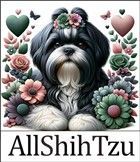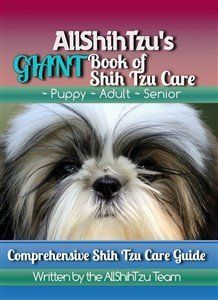Shih Tzu Double Colors
Overview
- Black and white (S 019)
- Blue and white (S 045) - The skin points (nose, lips, eye rims, and paw pads will be blue (diluted black). The coat itself can be a variety of colors, but there will be blue hairs (diluted black) to some extent.
- Brindle and white (S 059) - Brindle is a pattern of stripes. These can be in the gray family (whites, silvers, black) or the brown family (creams, tans, browns). The brindling can be light or heavy and thin or thick.
- Gold and white (S 092)
- Liver and white (S 125) - The skin points (nose, lips, eye rims, and paw pads will be liver colored (a type of brown that ranges from very light sometimes with a pink sheen to a deep rich chocolate brown). The coat itself can be a variety of colors, but there will be liver hairs (ranging from light cream to dark brown) to some extent.
- Red and white (S 146)
- Silver and white (S 182)
Examples of Double Colors
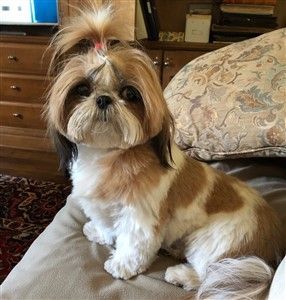
This Shih Tzu is a Red & White (color code S 146); as a pup, her red was much brighter. It has faded down somewhat to what may be compared to a dark gold, but she is still technically a red & white.
Dee Dee, photo courtesy of Daphne L.
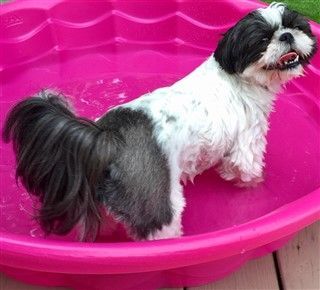
This is a Black & White Shih Tzu (color code S 019). What a beautiful tail. Every black and white Shih Tzu is going to look completely unique, with their colors falling in endless ways.
Piper, photo courtesy of Karen H.
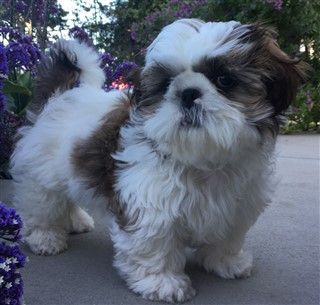
This cutie-pie is a Brindle & White (AKC color code S 059). Brindle is not actually a color, it is a pattern of stripes and holds many colors. Colors in the brindling are usually gray, black and brown hairs that are intermingled.
Cosmo, photo courtesy of Maria S.

This is a Liver & White Shih Tzu (AKC color code S 125). What makes this Shih Tzu liver is her skin points. You can see her nose is liver, not black. And the smaller inset photo shows her as a young puppy; her double color was very pronounced in her coat and it faded as she matured.
Lacey photo courtesy of Daphne L

This is a fantastic example of color change for Shih Tzu dogs. This Shih Tzu is registered as a Gold & White, color code S 092, but as he matured the gold transitioned into the gray that you see here.
Shih Tzu Supplies - An organized list of supplies every pet parent should have for their Shih Tzu; this list connects to more detailed articles with tips, advice and specific recommendations. See what your Shih Tzu is missing for optimal health and happiness.
